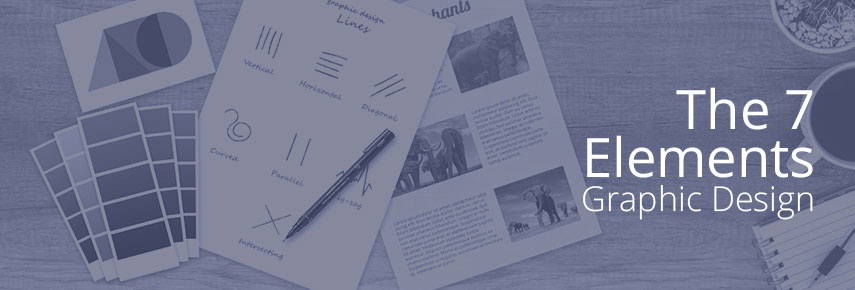The Seven Elements of Graphic Design
In this post, we're going to be breaking down the seven elements of graphic design - let us know where you implement these techniques in the comments!
Line
Such a simple element, and who knew something so small could make a big difference, depending on the way you implement it! You can use them for a straight or squiggly effect and place them into the background to make a small change to the white space. A bold strong line can suggest a significantly different message than a fragile wavy line. They can be used as dividers to split up sections within the concept; they can even help the flow of the design by guiding the eyes of the viewer.
Colour
Not only are colours used to generate emotion, but can add personality, and be the making of a great design. There are many variations for the use of colour, but the most basic rule is to make sure a colour scheme achieves the desired overall feel. For example, Swissted posters and their over-lapping colours offer a great insight to unique use of colour. Colour wheels are a fundamental tool within graphic design, and can be used to see if different colours work together.
Texture
If you are not aiming for a simple white space design, texture can be a good positive addition to your design. It creates an impact to the design and adds realism to the artwork. If you are aiming for a grunge style, David Carson is the biggest graphic designer in that field to look towards. In some designs he uses texture like torn newspaper and stained backgrounds, but mainly the most texture comes from the letterpress, where you can see the acrylic that’s been rolled on.
Shape
For design work, shapes can be used in the most creative ways or simplistic ways and still manage to demand attention. Minimal poster design, specifically film posters can be a great example of how some minimal shape designs are used to maximum effect. Sometimes just a bold shape or outline proves to be more powerful than a detailed image. Broadly speaking, there are two different types of shapes to be considered; geometric shapes which are more uniform and structured, and organic or free-flowing which, as the name suggests, provide a softer feel.
Space
A vital principle to graphic design, no one will give attention to something that’s too cluttered. Space helps make your design look professional and neat. White space is another term for this. The best example of space being used in a creative way would be the Apple website, it’s not packed and this encourages the viewer to keep scrolling for more. Space within a design helps the audience to flow along with the concept and it helps direct them where to look next.
Typograghy
Different typefaces would produce different impressions for the viewer. You have to use the right font with the right design. For instance, you wouldn’t use Comic Sans to give out warnings to people, as it won’t be taken seriously, and you wouldn’t use a thin calligraphy-style font to present contact details on a poster as it can be misread. Choosing a font that works for the purpose is key. Good use of typography will employ a hierarchy-style and start where the audience would begin to read, guiding them along the page.
Image
Last but not least. Adding images to your design can easily help announce what you are trying to get across to your audience. Not only do images speak for themselves, but they really help grab the attention of people who are not always drawn to text. The most important factor when using images is to make sure it matches what you are saying. People will look at images first in most cases. Ensure you are using all of the other elements to help the image fit in nicely with the design and not break the flow of the concept.
We hope you found our breakdown useful. If you have an interest in Graphic Design, keep an eye out for our future blog posts as there will be more on this topic.

No comments for "The Seven Elements of Graphic Design " yet, why don't you let us know what you think.
Leave a Comment
Your email address will not be published. Required fields are marked *